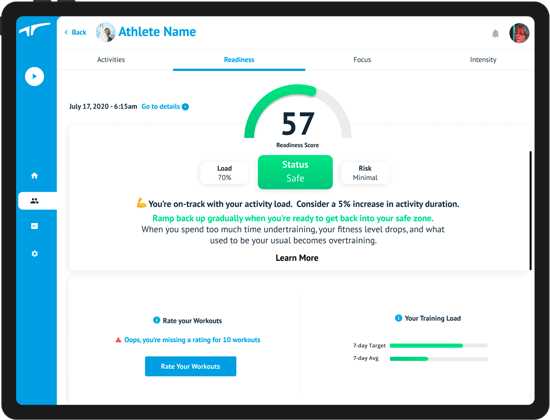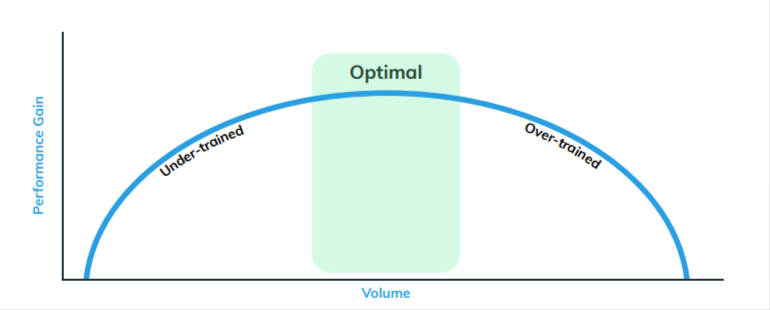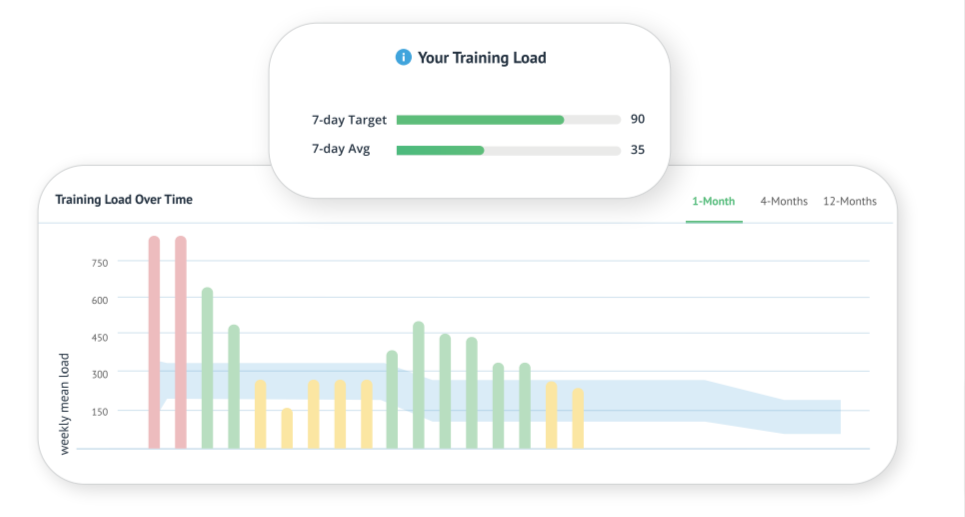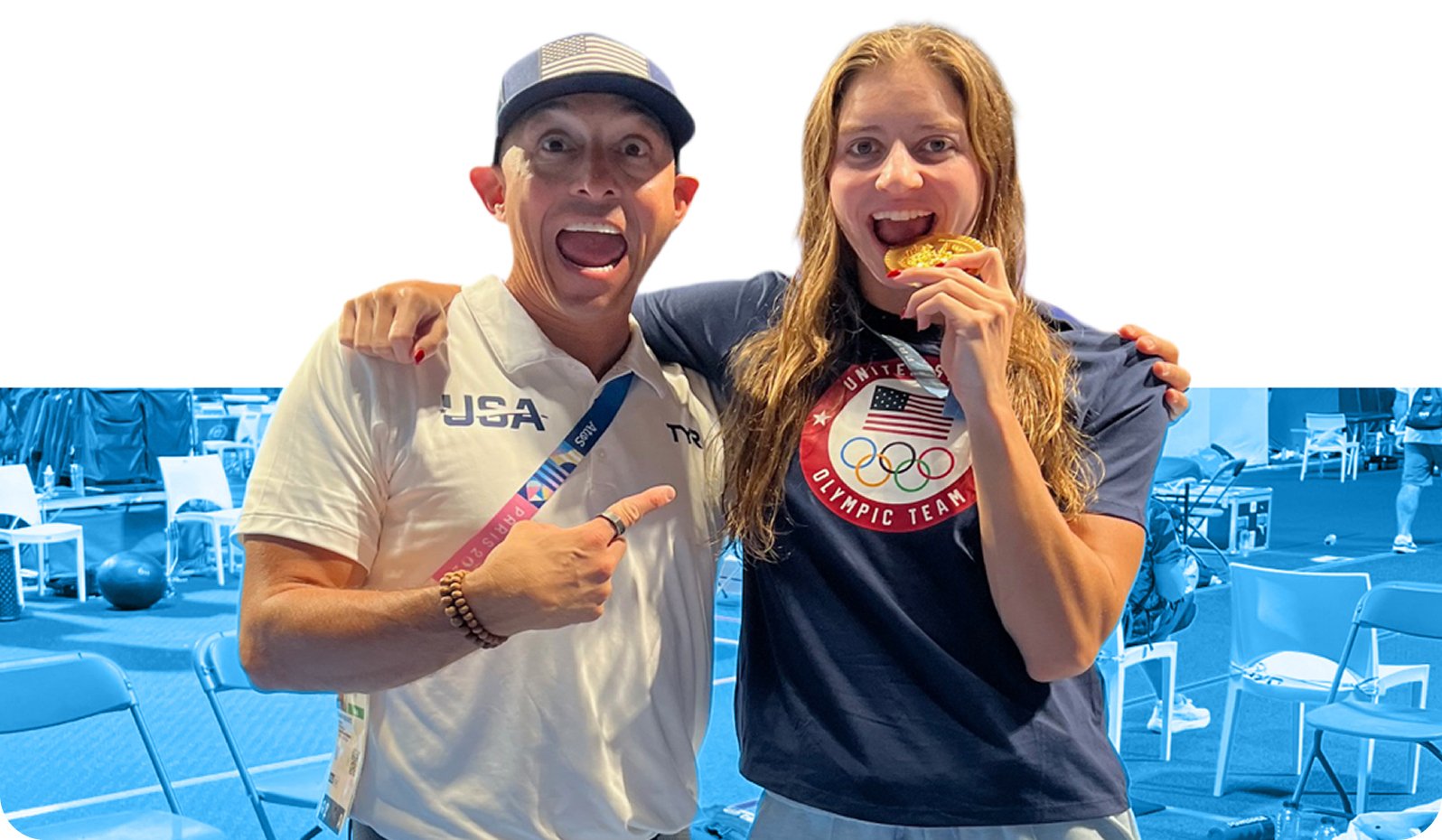Swimming is a challenging and rewarding sport where coaches and athletes work hard to excel. However, it takes more than hard work on race day to deliver peak performance. Careful planning and monitoring of training loads are essential for coaches and swimmers to achieve their goals while avoiding overtraining, poor performance and injury.
Thankfully, load monitoring can help coaches and swimmers develop effective training plans and achieve faster swimming. This article explores how load monitoring can optimize training and promote faster recovery while minimizing the risk of injury. By using load monitoring to pay attention to training loads, coaches and swimmers can enhance their performance and avoid setbacks.
What is load monitoring?
To understand the importance of load monitoring for tapering, it's essential to understand the concept of training load. This refers to the amount of physical activity performed during training. It includes the volume, intensity and frequency of workouts. Training loads must be carefully managed to ensure that athletes do not overexert themselves and risk injury or burnout.
Coaches have traditionally used subjective methods to assess athlete readiness for performance. These methods involve checking for signs of fatigue and tracking volume. But now, load monitoring systems provide a more objective approach.
These systems allow for easy quantification and evaluation of internal and external loads, leading to better analysis and more effective training plans. With load monitoring systems, coaches are equipped with the tools to create tailored training programs for swimmers.
In more detail, load monitoring involves collecting data on an athlete's training load and monitoring their physical responses to that load. This data can include heart rate, breathing rate, or perceived exertion measurements.
TritonWear Readiness
Readiness is TritonWear's advanced load monitoring system that uses AI technology to track an athlete's typical workout patterns. It integrates workout ratings (RPE) with the volume and intensity of monitored workouts to calculate an athlete's load. This information is then used to provide valuable guidance on how to maintain an optimal training balance for maximum performance.
Load= Volume x RPE (a workout rating of perceived exertion)
Readiness Score

How can Readiness help optimize training and promote faster recovery?
1. Preventing overtraining: Load monitoring systems like TritonWear Readiness can help prevent overtraining by tracking load and ensuring it doesn't exceed the body's ability to recover.
The ideal load change is between 10% to 15% per week.
This rate of increase allows the body to adapt and gradually progress without causing too much strain on the muscles and joints.

2. Individualizing training: It allows coaches and athletes to customize training programs based on individual responses to exercise stress. Some athletes may need more intensity, while others may need more rest to prevent burnout and promote recovery.
3. Adjusting training load: By monitoring the load, coaches and swimmers can determine when adjustments are necessary. TritonWear Readiness helps by providing a load status of safe, over, or under training. If the load status falls outside the safe zone, it signals that the current change in load is either too high or too low, allowing for timely modifications to be made.

4. Promoting faster recovery: Monitoring load helps promote faster recovery by informing coaches and athletes when to tweak their training. This includes changing intensity, volume, and frequency to secure sufficient recovery time between sessions.
5. Reducing the risk of injury: Load monitoring helps reduce the risk of injury by ensuring that the body is not subjected to a workload beyond its capacity to recover and adapt. This means athletes can have a more consistent training regimen, limiting missed training sessions due to illness or injury.
Effective monitoring reduces and keeps the risk of overtraining below 5%(1).
One of the key benefits of load monitoring is its role in tapering. During the taper phase, coaches gradually reduce training loads leading to competition. This is why the tapering period is essential. It allows the athletes' bodies to recover from the intensity of training. This will enable them to peak at the perfect time for the best performance.
What most coaches might not know about load monitoring is that the timing and duration of a taper period can vary. This really depends on the swimmer's response to the training load. While general guidelines for tapering do exist, optimal tapering may differ between athletes.
How does Readiness help prime performance?
1. Properly timed taper: Load monitoring allows athletes and coaches to time the taper leading up to a big meet. By reducing load through the taper, the body can recover and store energy to perform at peak levels during competition.
2. Early detection of overtraining: Load monitoring helps detect early signs of overtraining and fatigue before they significantly impact performance.
3. Confidence: Load monitoring helps athletes build confidence before a swim meet by demonstrating their progress over time. When athletes know they have trained correctly and effectively, it can boost their confidence and help them deliver in the pool.
TritonWear Training Load Over Time Graph

To summarize, load monitoring helps coaches enhance athlete performance and enables them to make smarter training decisions. They can customize their workouts for the best possible results. It also helps swimmers recover faster and boosts their confidence in the lead-up to the competition.
Therefore, collecting personalized data through load monitoring systems for each athlete is crucial. These tools lay the groundwork for designing effective training programs that cater to individual swimmers' needs, reducing injury risk and optimizing performance.
TritonWear Readiness provides athletes and coaches with the analytics and insights required to fine-tune their training programs for faster swimming.
How to get it right during taper?
3 top tips on how to safely adjust volume and intensity during tapering in swimming:
1. Use Readiness to guide your taper: It is important to monitor individual responses to tapering and adjust the training load accordingly to prevent overtraining or undertraining (2).
2. Gradually reduce volume while maintaining intensity: Coaches typically decrease the training volume while maintaining workout intensity during the taper period. This is done by reducing the number of sets and repetitions while still performing them with high intensity. Swimmers who taper with this approach had notably improved performance outcomes and lower levels of perceived fatigue (3).
When combined with TritonWear Intensity, coaches can accurately determine the level of effort exerted by their athletes during each workout, allowing them to gauge their physiological responses to training better.
3. Use Focus to hone in on technique during the taper: Tapering allows simmers to fine-tune their technique ahead of the competition. With a lowered volume, swimmers can focus on their stroke mechanics, corrections, and adjustments (4). By utilizing TritonWear Focus, coaches and swimmers can track skill execution and ensure every stroke is optimized for maximum swimming efficiency.
In conclusion, load monitoring is crucial for guiding the taper period, given that swimmers may respond differently to training loads. Coaches need to best prepare swimmers by gradually decreasing the volume of training while still maintaining the intensity and fine-tuning each swimmer's performance. With load monitoring tools like Readiness, coaches can customize taper programs effectively for each swimmer.
As load monitoring systems and wearable technologies continue to advance, the future of training and competing in swimming looks promising. Personalized monitoring and optimizing training loads based on individual responses will undoubtedly lead to better performance outcomes in the sport.
No more guesswork. Grab your copy of the Load Monitoring Guide now and discover the power of data in improving mechanics and keeping athletes healthy. Say goodbye to injuries and hello to peak performance. Get your guide today!

References:
1.Gabbett TJ. The training-injury prevention paradox: should athletes be training smarter and harder?. Br J Sports Med. 2016 Jan 12
2. Haugen, T., Tønnessen, E., Seiler, S., & Børsheim, E. (2014). The effect of variable tapering on endurance performance: a systematic review and meta-analysis. Sports Medicine, 44(5), 615-631. doi: 10.1007/s40279-013-0148-2.
3. Pfeiffer, R. A., Yoon, T., & Tourville, T. W. (2017). The effect of different tapering strategies on endurance performance in swimmers. Journal of strength and conditioning research, 31(10), 2760-2764. doi: 10.1519/JSC.0000000000001748.
4. Morikawa, T., Murayama, K., Ogasawara, S., Iguchi, H., Isaka, T., & Nakajima, T. (2019). Effects of sustained swimming with biofeedback on swimming performance and technique. Journal of sports sciences, 37(12), 1410-1417. doi: 10.1080/02640414.2019.1587573.




.png)

.png)